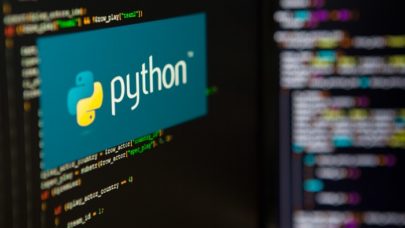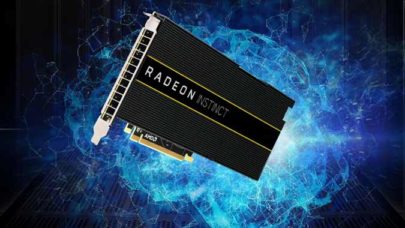
Solving Heterogeneous Programming Challenges with Python, Today
June 30, 2022
You may be surprised how ready Python is for heterogeneous programming, and how easy it is to use today. Our first three articles about heterogeneous programming focused primarily on C++ as we ponder “how to enable programming in the face of an explosion of hardware diversity that is coming?” For a refresher on what motivates this question... Read more…

Why SYCL: Elephants in the SYCL Room
February 3, 2022
Commentary -- In the second of a series of guest posts on heterogeneous computing, James Reinders, who returned to Intel last year after a short “retirement, Read more…

Solving Heterogeneous Programming Challenges with SYCL
December 8, 2021
In the first of a series of guest posts on heterogenous computing, James Reinders, who returned to Intel last year after a short “retirement,” considers how SYCL will contribute to a heterogeneous future for C++. Reinders digs into SYCL from multiple angles... Read more…

15 Slides on Programming Aurora and Exascale Systems
May 7, 2020
Sometime in 2021, Aurora, the first planned U.S. exascale system, is scheduled to be fired up at Argonne National Laboratory. Cray (now HPE) and Intel are the k Read more…

European LEGaTO Project Seeks to Develop Energy Efficient Stack
March 14, 2018
A new European project – Low Energy Toolset for Heterogeneous Computing (LEGaTO) – seeks to develop a software stack that improves energy management in supp Read more…

Dealing with HPC Correctness: Challenges and Opportunities
January 25, 2018
Developing correct and reliable HPC software is notoriously difficult. While effective correctness techniques for serial codes (e.g., verification, debugging an Read more…

KNUPATH Hermosa-based Commercial Boards Expected in Q1 2017
December 15, 2016
Last June tech start-up KnuEdge emerged from stealth mode to begin spreading the word about its new processor and fabric technology that’s been roughly a deca Read more…

AMD Reveals ‘Instinct’ for Machine Intelligence
December 13, 2016
At the AMD Tech Summit in Sonoma, Calif., last week (Dec. 7-9), CEO Lisa Su unveiled the company's vision to accelerate machine intelligence over the next fiv Read more…

- Click Here for More Headlines

Whitepaper
Transforming Industrial and Automotive Manufacturing
In this era, expansion in digital infrastructure capacity is inevitable. Parallel to this, climate change consciousness is also rising, making sustainability a mandatory part of the organization’s functioning. As computing workloads such as AI and HPC continue to surge, so does the energy consumption, posing environmental woes. IT departments within organizations have a crucial role in combating this challenge. They can significantly drive sustainable practices by influencing newer technologies and process adoption that aid in mitigating the effects of climate change.
While buying more sustainable IT solutions is an option, partnering with IT solutions providers, such and Lenovo and Intel, who are committed to sustainability and aiding customers in executing sustainability strategies is likely to be more impactful.
Learn how Lenovo and Intel, through their partnership, are strongly positioned to address this need with their innovations driving energy efficiency and environmental stewardship.
Download Now
Sponsored by Lenovo
Whitepaper
How Direct Liquid Cooling Improves Data Center Energy Efficiency
Data centers are experiencing increasing power consumption, space constraints and cooling demands due to the unprecedented computing power required by today’s chips and servers. HVAC cooling systems consume approximately 40% of a data center’s electricity. These systems traditionally use air conditioning, air handling and fans to cool the data center facility and IT equipment, ultimately resulting in high energy consumption and high carbon emissions. Data centers are moving to direct liquid cooled (DLC) systems to improve cooling efficiency thus lowering their PUE, operating expenses (OPEX) and carbon footprint.
This paper describes how CoolIT Systems (CoolIT) meets the need for improved energy efficiency in data centers and includes case studies that show how CoolIT’s DLC solutions improve energy efficiency, increase rack density, lower OPEX, and enable sustainability programs. CoolIT is the global market and innovation leader in scalable DLC solutions for the world’s most demanding computing environments. CoolIT’s end-to-end solutions meet the rising demand in cooling and the rising demand for energy efficiency.
Download Now
Sponsored by CoolIT
Advanced Scale Career Development & Workforce Enhancement Center
Featured Advanced Scale Jobs:
HPCwire Resource Library
HPCwire Product Showcase
© 2024 HPCwire. All Rights Reserved. A Tabor Communications Publication
HPCwire is a registered trademark of Tabor Communications, Inc. Use of this site is governed by our Terms of Use and Privacy Policy.
Reproduction in whole or in part in any form or medium without express written permission of Tabor Communications, Inc. is prohibited.
























